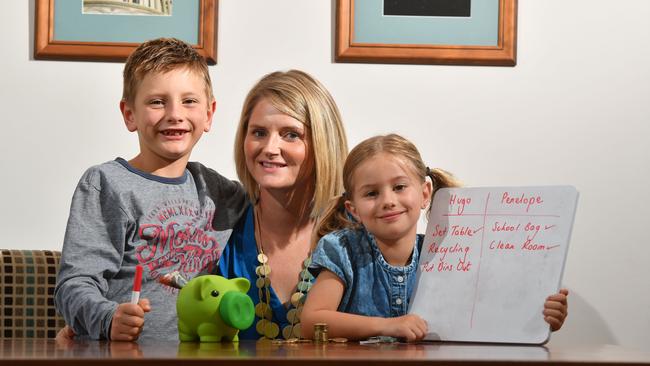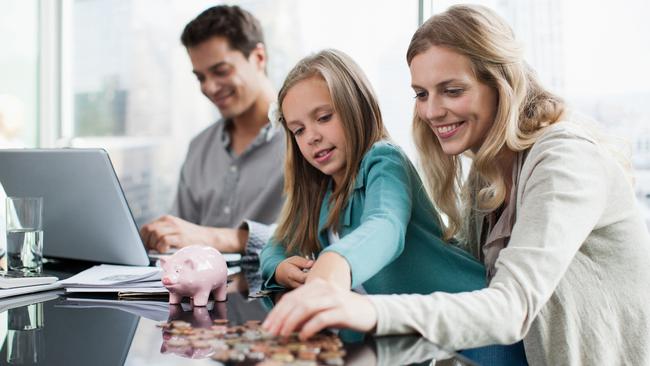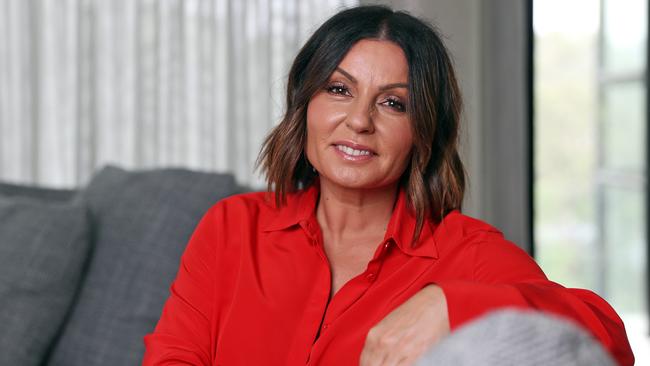Money mistake that’s costing your kids big time
Experts say when it comes to teaching kids about money, there is one massive mistake parents are making as they grapple with the cost of living crisis.

Property
Don't miss out on the headlines from Property. Followed categories will be added to My News.
A cost of living crisis calls for clever parenting.
Experts say teaching kids good savings habits from an early age helps them to form positive relationships with money as they grow up – and thanks to the modern world of banking, saving has never been more fun.
OPEN FINANCE
While many parents hide their financial woes from their children, good money habits start young – and a child’s biggest influence is their parents, says Finder money expert and mother of three Sarah Megginson.

She suggests speaking to kids about money from an early age.
“Even young kids can understand the concept of choosing one thing over another because they cost money so you can’t have both,” she says. “It’s about planting seeds to build on in the future.”
Canstar’s editor-at large and author of ‘Ditch the Debt and Get Rich’ Effie Zahos says kids absorb their parents’ viewpoints around money.
“If there is financial angst in the household, they pick that up,” she says.
She says it’s important for parents to be open with household finances and get their kids involved in making decisions.
“By trying to protect your children from the cost of living pressures, you’re probably doing more harm than good,” she says.

AGE-APPROPRIATE SAVING
The question of whether to teach saving habits through a piggy bank or a bank savings account depends largely on the age of the child and whether you have cash lying around, Ms Zahos says.
While using physical money can be a great way to teach saving from an early age, kids’ bank accounts often engage children by making saving fun.
Learning how to handle digital money is also important.
“We are in a digital society now,” Ms Zahos says. “Chances are your young child may never even hold cash, their first purchase could even be downloading a gaming app or something like that.”

POCKET MONEY
Ms Megginson says pocket money works best when it is attached to a contribution, such as completing chores or adding something positive to family life.
“This could be helping younger kids with homework, or maintaining the screen time habits you’ve set them,” she says.
One way to “gamify” saving is to use a sticker or points chart.
“My kids earn points for each chore they do, and they get really competitive trying to beat each other,” she says.
Raising Children network director Derek McCormack says pocket money can play an important role in a child’s life.
“When children get pocket money they have to make choices about spending or saving, which leads to learning about the consequences of losing money or spending it unwisely,” he says.

While saving should be encouraged, kids should also be allowed to spend some of their money if they choose to, Ms Zahos says. They should also be allowed to make their own mistakes – as long as the proper restrictions are in place when it comes to debit and credit cards.
Mr McCormack says buyer’s remorse should be used as a learning opportunity.
“It’s a good idea to talk with your child about what they learned from the experience and what they might do differently next time,” he says.
CHOOSING A BANK ACCOUNT
While it’s tempting to look for the highest interest rates available, it’s often more useful to consider the range of features on offer, Ms Zahos says.

“A kid’s bank account doesn’t have to be the highest paying one,” she says. “They’re not going to get rich with a 5 per cent interest rate. The idea of having a bank account should be that there’s great digital support there – they can set their goal, they can upload their picture.”
“You want your child to be engaged with the bank account, and the more tools they have, the better.”
Parents may want to set up restrictions on the amount of money their child can access, Mr McCormack says. “Accounts with parental controls are often free and allow a child to access their statements and balance online,” he says.

PROTECTING FROM SCAMS
Some banking apps allow children to “dip their toes into the world of online shopping” Ms Zahos says, making cyber safety an important consideration.
“Money-related scams are a widespread problem,” Ms Megginson says. “Scammers are getting very sophisticated at impersonating big, trustworthy brand names, and some even pretend to be a family member or friend in need.”
She says it’s important to speak with your kids about the consequences of clicking on a wrong link or handing out personal information.

“Part of this conversation is also around helping them make decisions,” she says. “My 7-year-old son bought $300 worth of Roblox credits once because we didn’t have the correct permissions set up – that was a tough lesson for all of us.”
Ms Zahos says it’s also important to understand the tax-implications that come with a child’s savings account and the benefit of quoting your child’s TFN.
“It’s worth understanding what the actual tax free threshold is for kids and that’s as low as $416,” she says.
The ATO outlines the tax implications for kids’ savings accounts on its website.
More Coverage
Originally published as Money mistake that’s costing your kids big time




